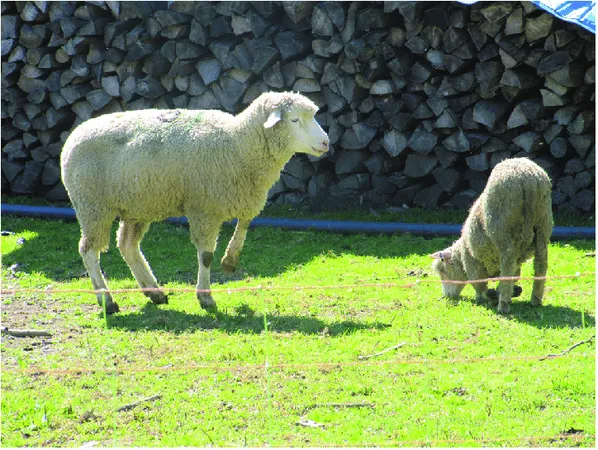Footrot
Footrot is a highly contagious disease affecting the hooves of sheep and other ruminants. It is caused by a combination of bacterial infections, primarily involving Dichelobacter nodosus and Fusobacterium necrophorum. This disease can cause severe lameness and discomfort in affected animals, leading to significant economic losses and welfare issues in sheep flocks.

Footrot in Sheep
Introduction
Footrot is a highly contagious disease affecting the hooves of sheep and other ruminants. It is caused by a combination of bacterial infections, primarily involving Dichelobacter nodosus and Fusobacterium necrophorum. This disease can cause severe lameness and discomfort in affected animals, leading to significant economic losses and welfare issues in sheep flocks.
Symptoms and Diagnosis of Footrot 🩺
The primary symptom of footrot is lameness. Affected sheep may lie down for long periods and avoid bearing weight on the affected leg. In severe cases, sheep may walk on their knees if both front legs are affected. Other symptoms include:
- Swelling and moistening of the skin between the claws
- Separation of the horn tissue of the sole
- Foul-smelling discharge
- Shedding of the whole hoof capsule in severe cases
- Chronic infection leading to mis-shapen and overgrown hooves
Diagnosis is typically based on clinical signs and examination of the feet. In some cases, laboratory tests may be used to confirm the presence of D. nodosus and F. necrophorum.
How to treat Footrot in sheep 💊
Treatment of footrot involves a combination of topical and systemic therapies. Here are some common treatment methods:
- Footbathing in a 10% zinc sulfate solution or 3% formalin solution
- Injecting long-acting antibiotics such as oxytetracycline
- Removing necrotic tissue with secateurs or a sharp knife (carefully to avoid over-trimming)
- Isolating affected sheep to prevent the spread of infection
It is important to keep treated sheep in a dry environment for at least 24 hours after treatment to ensure the effectiveness of the antibiotics.
How to prevent Footrot in sheep 🛡️
Preventing footrot involves good management practices and regular monitoring of the flock. Here are some key prevention strategies:
- Regular footbathing during high-risk periods
- Maintaining dry and clean living conditions for the sheep
- Quarantining new or returning animals for at least three weeks
- Promptly treating any cases of lameness to prevent the spread of infection
- Vaccinating the flock against footrot
Implementing a well-planned footrot control program can significantly reduce the prevalence of the disease in your flock.
Conclusion
Footrot is a serious disease that can cause significant welfare and economic issues in sheep flocks. By understanding the symptoms, treatment options, and prevention strategies, you can effectively manage and reduce the impact of footrot in your flock. Always consult with your veterinarian for the best practices tailored to your specific situation.

